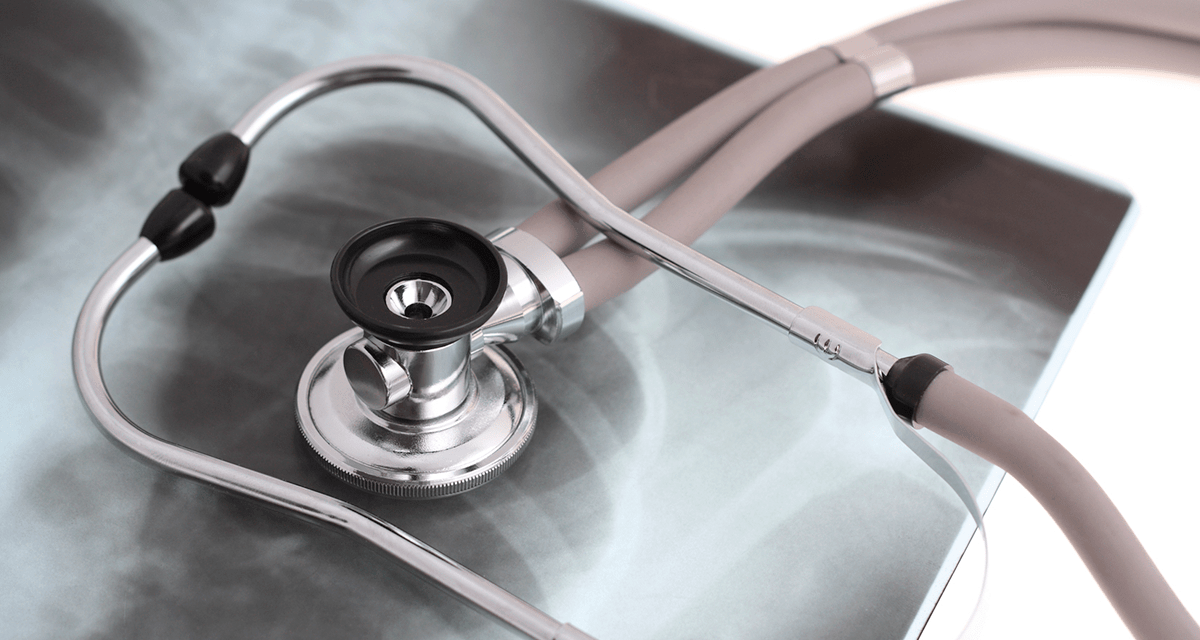Patients at risk for latent or active tuberculosis (TB) infection should be assessed with newer tests, including interferon-gamma release assays (IGRAs) and molecular diagnostics, recommend guidelines on TB diagnosis developed by the American Thoracic Society (ATS), Infectious Diseases Society of America (IDSA) and Centers for Disease Control and Prevention (CDC) and published in the journal Clinical Infectious Diseases. Advances in testing prompted the first new guidelines on TB diagnosis in 17 years.
TB spreads through the air and can be challenging to diagnose and treat. Up to 13 million Americans have latent TB, meaning they are infected with Mycobacterium tuberculosis, but are asymptomatic and can’t spread the infection to others. Only 5 to 10 percent ultimately go on to develop the potentially deadly disease itself, about half of those within two years of being infected. Treatment varies depending on whether the TB is latent or becomes active (TB disease).
TB disease most often affects the lungs, but can affect other parts of the body such as the kidney, spine and brain. Those at higher risk of developing the disease include people with HIV and others with weakened immune systems, those with diabetes, smokers and others who are taking immune-suppressing medications called TNF blockers.
TB disease is a significant problem in developing countries, infecting one-third of the population worldwide and killing 1.5 million every year. It is far less prevalent in the United States: 9,557 cases of TB disease were reported in 2015, two-thirds of them in people who were foreign-born. Because TB disease is less common in the United States, healthcare providers may overlook it as a possible diagnosis.
“These guidelines develop a structured approach to testing, recommending that doctors test for latent TB in patients who are at risk for infection and who would benefit from treatment, and for TB disease in patients who have signs and symptoms of the disease,” said David M. Lewinsohn, MD, PhD, lead author of the guidelines and professor of medicine at Oregon Health & Science University, Portland. “Even though TB disease is not common in this country, it’s important that doctors remember it’s still around, and that they should test patients when appropriate.”
Recommendation Highlights
The guidelines recommend healthcare providers consider testing for latent TB in patients who:
- Live with a person who has TB disease
- Immigrated to the United States from a country where TB disease is common
- Are in high-risk settings, such as prison
If the patient does not have active signs of TB disease, the guidelines recommend:
- Testing be performed with one of two Food and Drug Administration-approved tests called IGRAs, rather than using a tuberculin skin test (TST).
- If an IGRA is not available, a TST is acceptable.
IGRAs test the blood and are more effective at detecting TB disease infection than a TST. The TST involves injecting a tiny bit of TB protein under the skin. The test is positive if a red bump develops within 48 hours. IGRAs also are more practical because they can be done in one patient visit. The TST requires two visits and patients often don’t return within the allotted two or three days to have results assessed.
- If a person has a positive TST or IGRA, has no symptoms and the chest X-ray is normal, latent TB treatment to prevent progression to TB disease should be considered.
- If the X-ray suggests active disease, the doctor should order a combination of tests of sputum (mucus from the respiratory tract), including smears, cultures and a nucleic acid amplification test (molecular diagnostic testing).
Molecular diagnostic testing results are more specific for TB disease than smears and available more quickly than cultures.
- If a patient has active signs of TB disease, doctors should order smear, cultures and molecular diagnostic testing, particularly in patients at higher risk, such as those who have HIV or live with a patient with TB disease, the guidelines recommend.
Symptoms of TB disease include ongoing fevers, night sweats, weight loss and coughing. If tests confirm TB disease, patients should be treated appropriately in conjunction with infectious disease and/or pulmonary physicians, as well as with the public health department. Much more intensive than treatment for latent TB, the regimen for TB disease includes a combination of four medications taken for six months. Treatment of antibiotic-resistant TB disease is even more complex.
Drug-resistant TB disease is becoming a significant problem, with about 500,000 cases of multi-drug resistant TB disease from 127 countries and extensively drug resistant TB disease reported in 105 countries. Because TB is a complex disease, treatment should be provided by physicians with TB experience, such as infectious disease specialists or pulmonologists.
The guidelines have been endorsed by the European Respiratory Society.
In addition to Dr. Lewinsohn, the guidelines panel includes: Michael K. Leonard, MD, FIDSA; Philip A. LoBue, MD; David L. Cohn, MD, FIDSA; Charles L. Daley, MD; Ed Desmond, PhD; Joseph Keane, MD; Deborah A. Lewinsohn, MD; Ann M. Loeffler, MD; Gerald H. Mazurek, MD; Richard J. O’Brien, MD; Madhukar Pai, MD, PhD; Luca Richeldi, MD, PhD; Max Salfinger, MD, FIDSA; Thomas M. Shinnick, PhD; Timothy R. Sterling, MD, FIDSA; David M. Warshauer PhD; and Gail L. Woods, MD.
IDSA has published more than 50 treatment guidelines on various conditions and infections, ranging from HIV/AIDS to Clostridium difficile. As with other IDSA guidelines, the TB diagnosis guidelines will be available in a smartphone format and a pocket-sized quick-reference edition. The full guidelines are available free on the IDSA website at www.idsociety.org.


